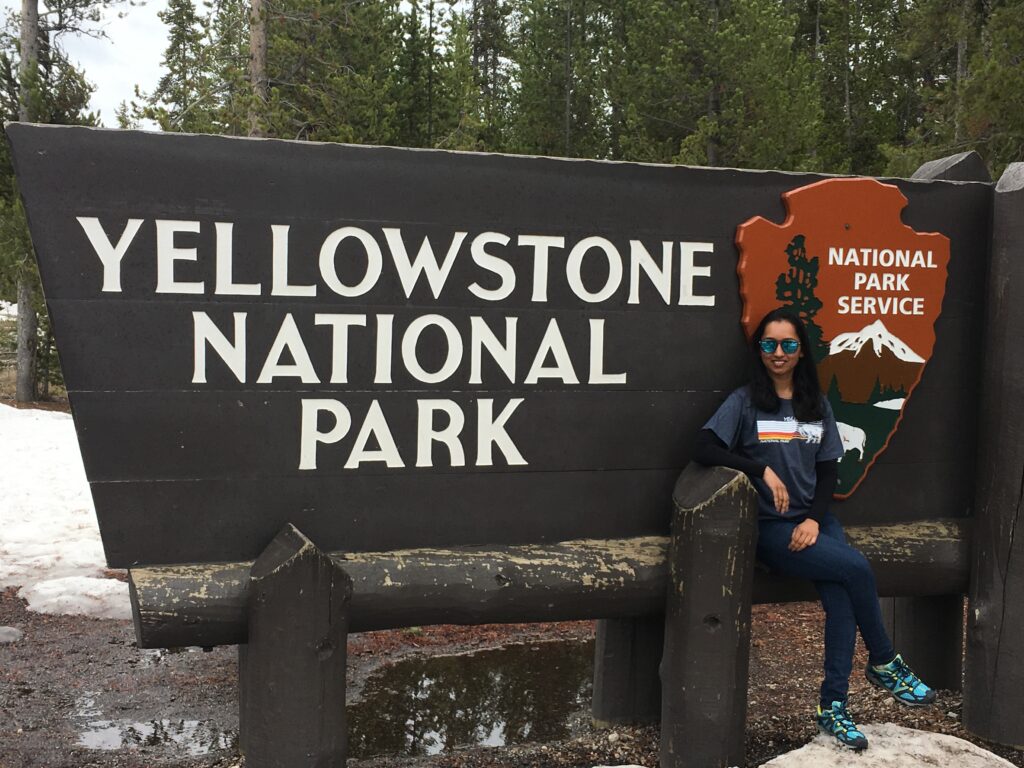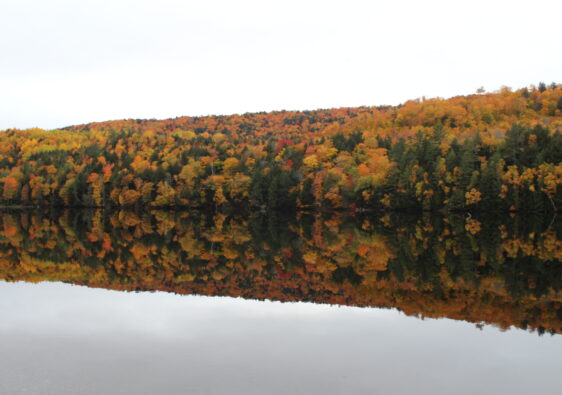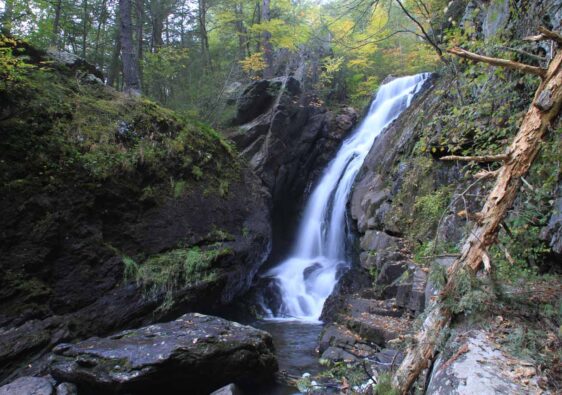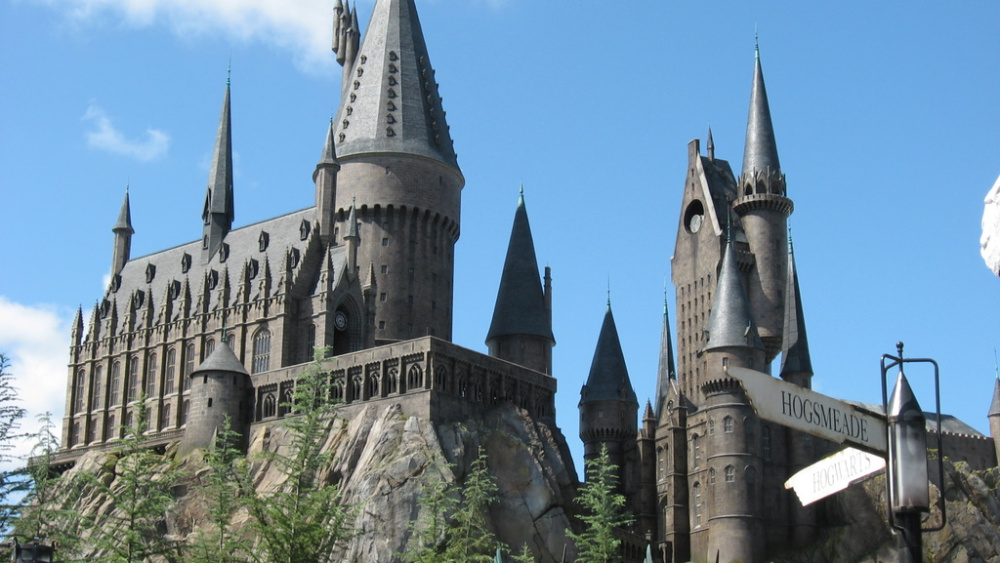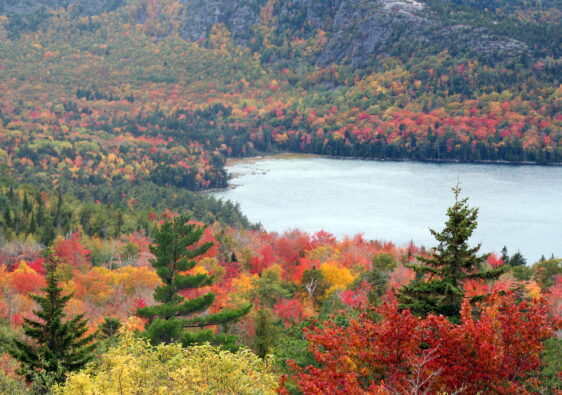Post Glacier National Park visit in Montana, the next National Park which we had in mind was Yellowstone. It is altogether a different world out there in this 3500-square-mile park, which is regarded as the first national park in the world, having been designated as one in 1872.
Do you know that YNP is an active supervolcano? As you walk around the park you may think: “I don’t see any volcanos?!” That’s because much of the entire park is a volcano – and the bubbling geysers and hot springs are an indication of the churning activity below the surface. YNP sits on top of a dormant volcano and is home to more geysers and hot springs than any other place on earth. Approximately 50 percent of the world’s hydrothermal features are here, creating an effect that makes the ground appear to be on fire.
Residing underneath Yellowstone, the supervolcano generates enormous amounts of heat near the surface of the ground that in turn powers the thousands of geysers, hot pools, mud pots and steam vents in the park. Geological studies indicate that over the course of recent millions of years the supervolcano has erupted approximately every 600,000 years. There are no indications it will erupt anytime soon.
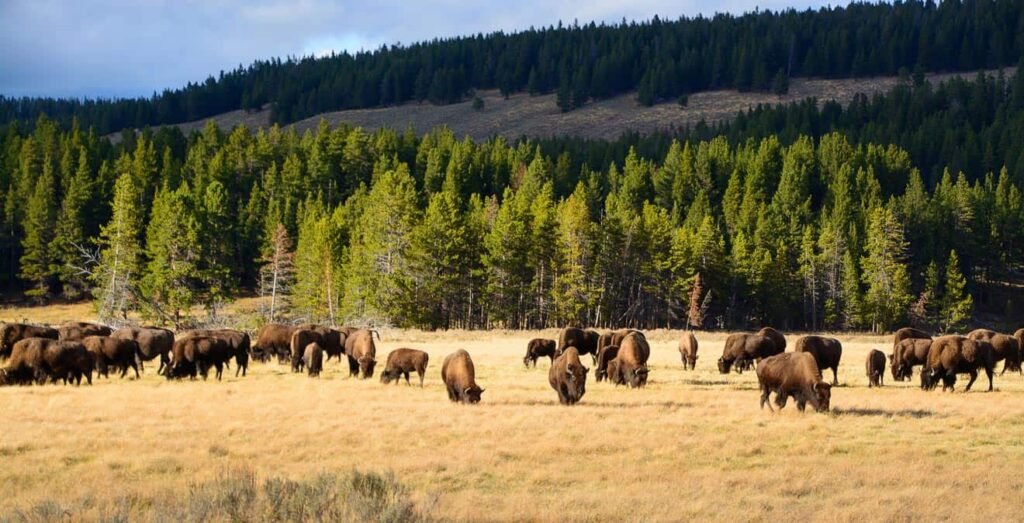
We visited Yellowstone in April, but the temperature was still negative, just like the winter. Advantage of planning trips in April-May is mild weather and fewer crowds.
So, let’s start our journey into this mystical world.
Day 1
There are a couple of options for starting your Yellowstone road trip, depending on where you are coming from.
You can fly into Salt Lake City, Utah and enjoy a 5-hour drive to the yellow stone south entrance through Grand Teton National Park. Or Yellowstone Airport. Or you can fly into the little expensive, yet scenic Jackson Hole airport, Wyoming. Jackson Hole airport was on our list, as it is the only airport right in the middle of breathtaking Grand Teton national park. Flying into the Jackson Hole Airport was an awe-inspiring start to our trip. One gets a breathtaking view of the Teton Mountain Range from the passenger seat and if you look closely you might spot elk and moose.
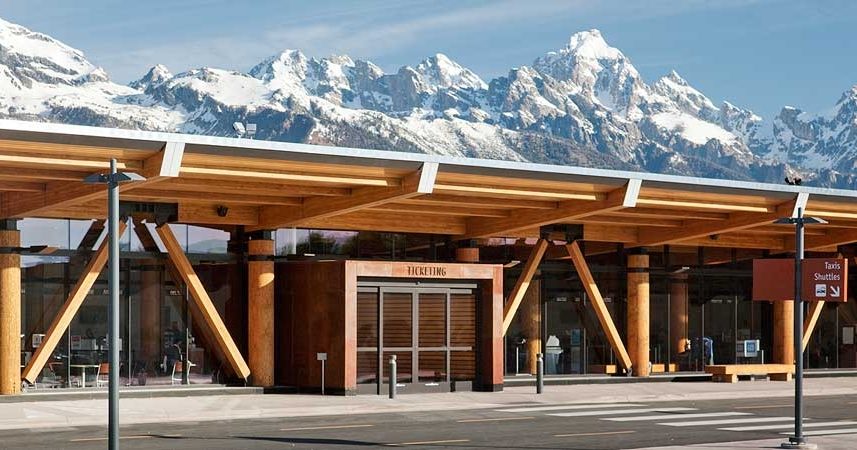

Day 2
We stayed at the West entrance of Yellowstone in Montana.
We started a little late as we were totally exhausted from the previous day’s journey. After having scrumptious breakfast at “Euro Café”, we started our exploration of the park.
Grand Canyon of Yellowstone:
This part of the park is very aptly named – the canyon carved out by the Yellowstone River is huge and deep. Very grand indeed.
Mineral stains mark the locations of hot springs and steam vents in the canyon walls. For thousands of years, upwardly percolating fluids have altered the chemistry of the rocks, turning them yellow, red, white, and pink. Most of the yellows in the canyon are the result of iron present in the rock. The canyon is a classic V-shaped valley, indicative of river-type erosion rather than glaciation. The canyon is still being eroded by the Yellowstone River.
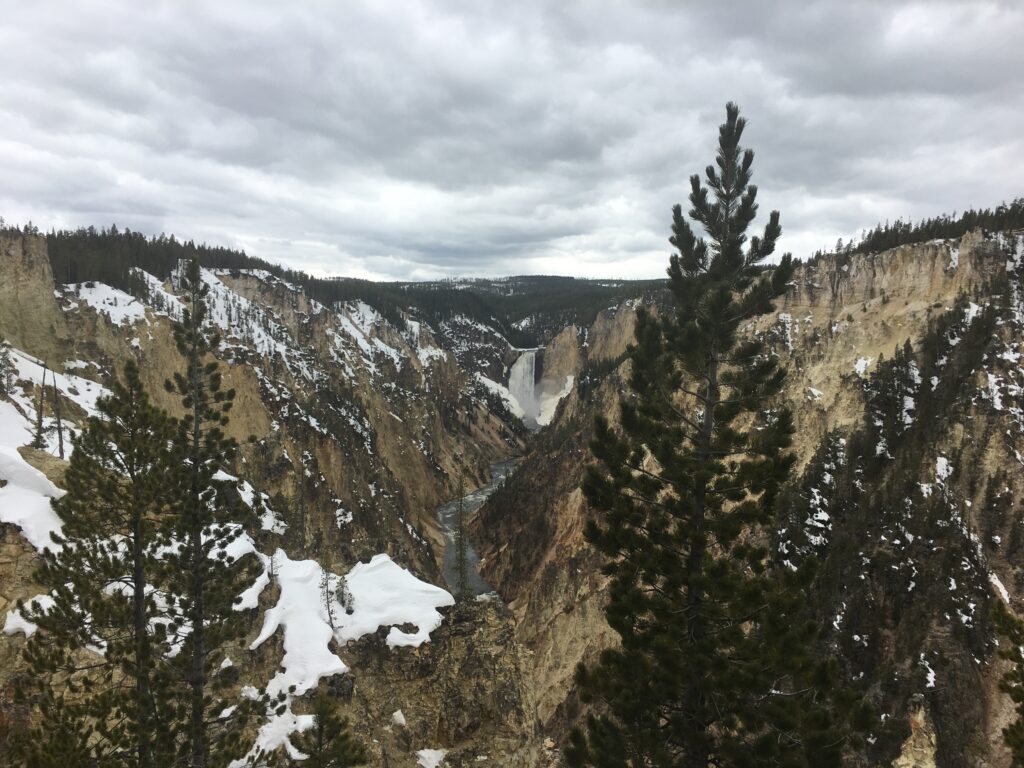
Artist Point:
To get the classic view of Grand Canyon of Yellowstone, head to Artist point. From here, you will get a breathtaking view of the canyon.
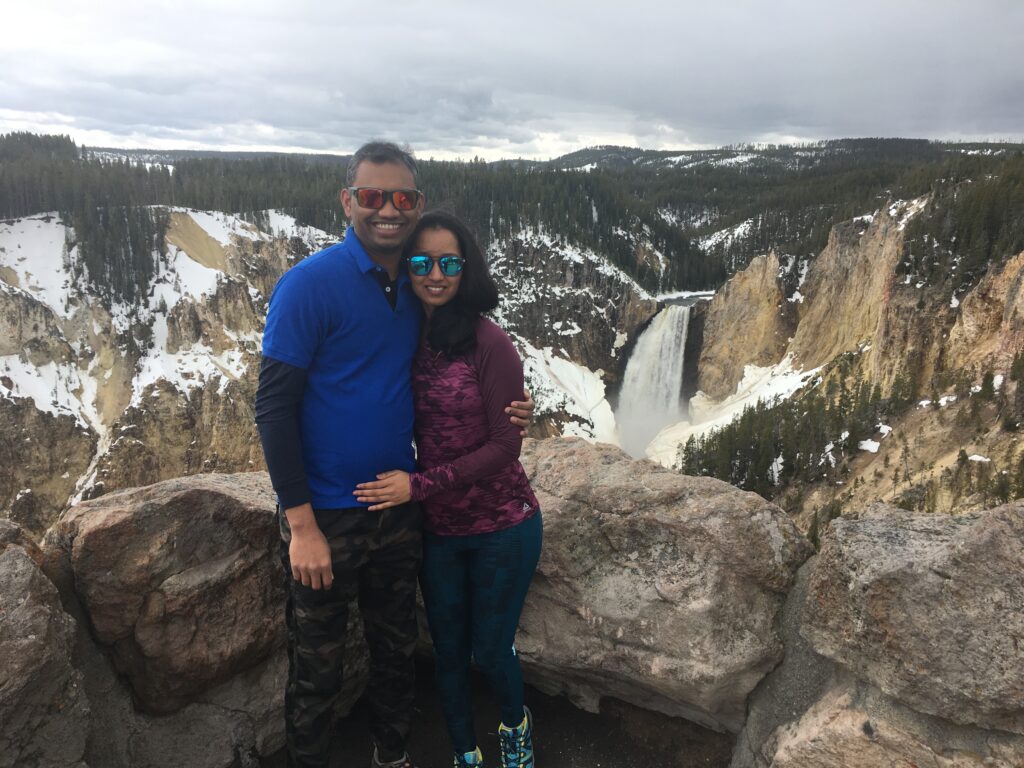
The great canyon has almost completely split the eastern and northern banks of the park. The great waterfall is made up of many underground aquifers creating the extraordinary landscape.
If you’re up for a short hike, make the hike down to the Brink of the Lower Falls. Or, you could tackle the even steeper Uncle Tom’s Trail which takes you to the foot of Lower Falls. Please keep in mind that all hiking trails will be closed in winter. Beware of the gusty chill winds during this period of the year.
Norris Geyser Basin:
Once you are near the parking lot of Norris geyser basin, it feels as if you are in chemistry lab carrying out experiments (given the smell in the air). Norris Geyser Basin is the hottest and most acidic hydrothermal area in Yellowstone. It is also the location of the world’s tallest active geyser, Steamboat Springs. The variety of colors found in the hot springs are evidence of minerals in the water as well as a wide variety of thermophiles (heat-loving microorganisms) that thrive here.
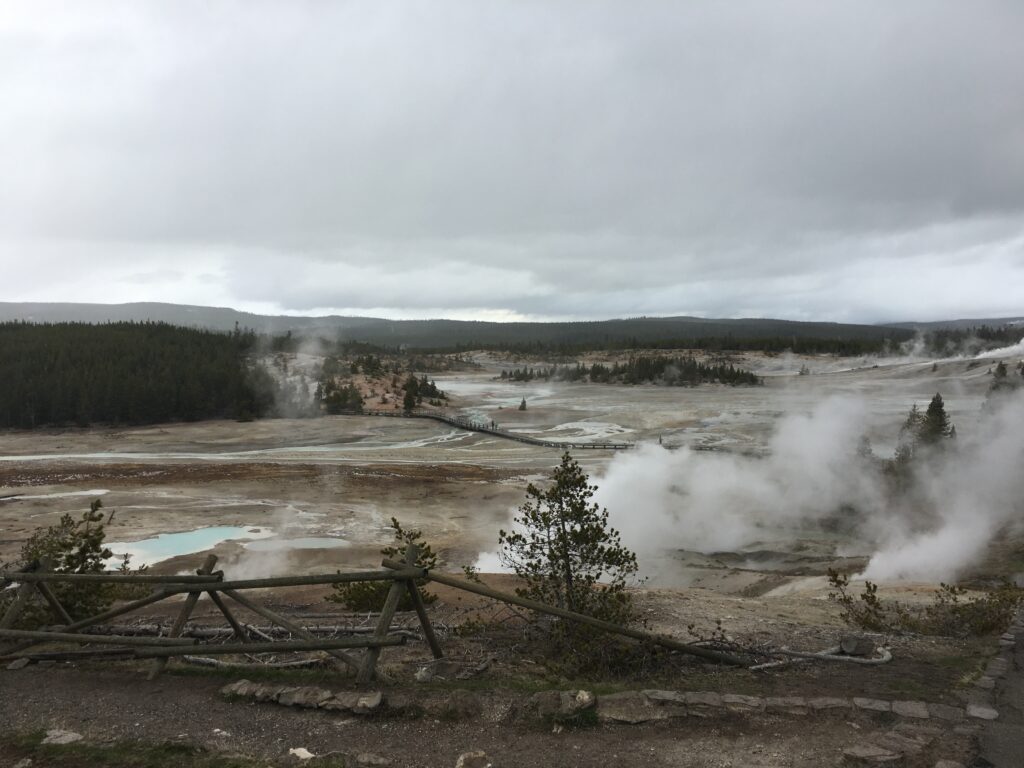
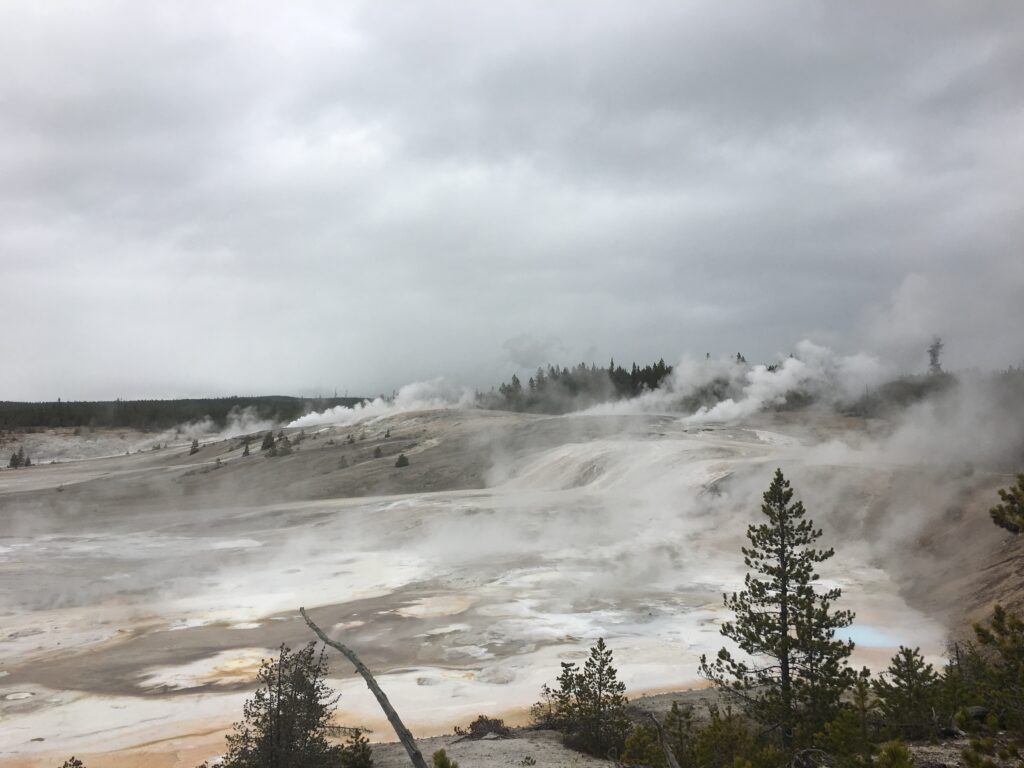
This area has two loops, the Back Basin (1.5 miles) and the Porcelain Basin (0.75 miles).
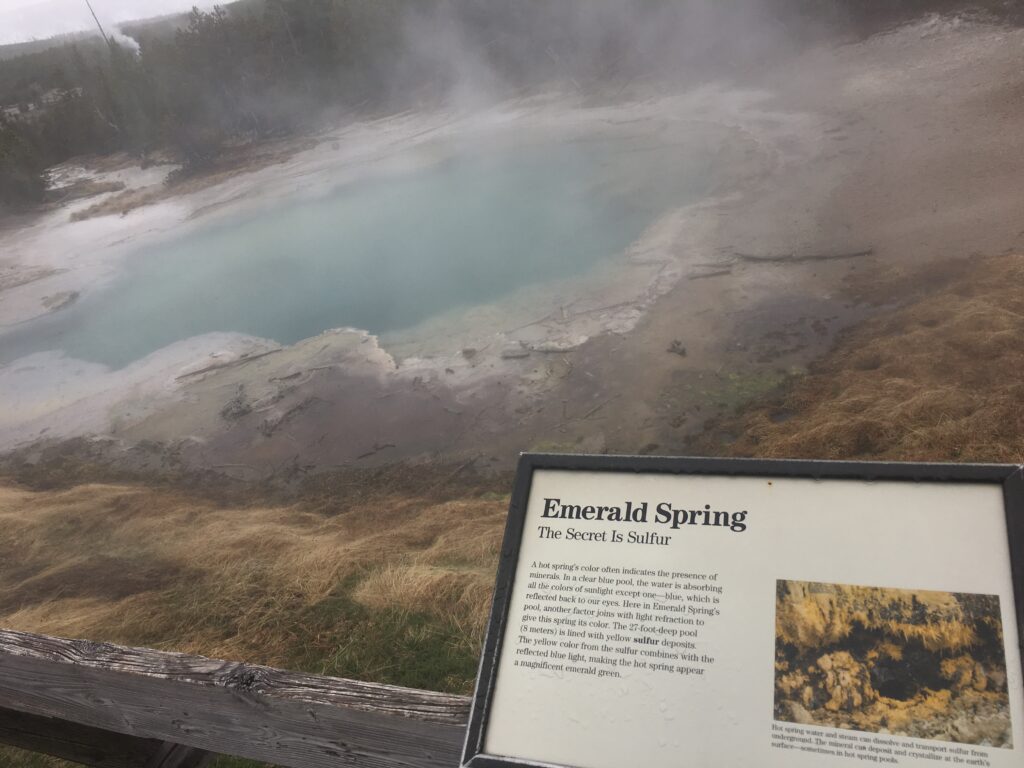
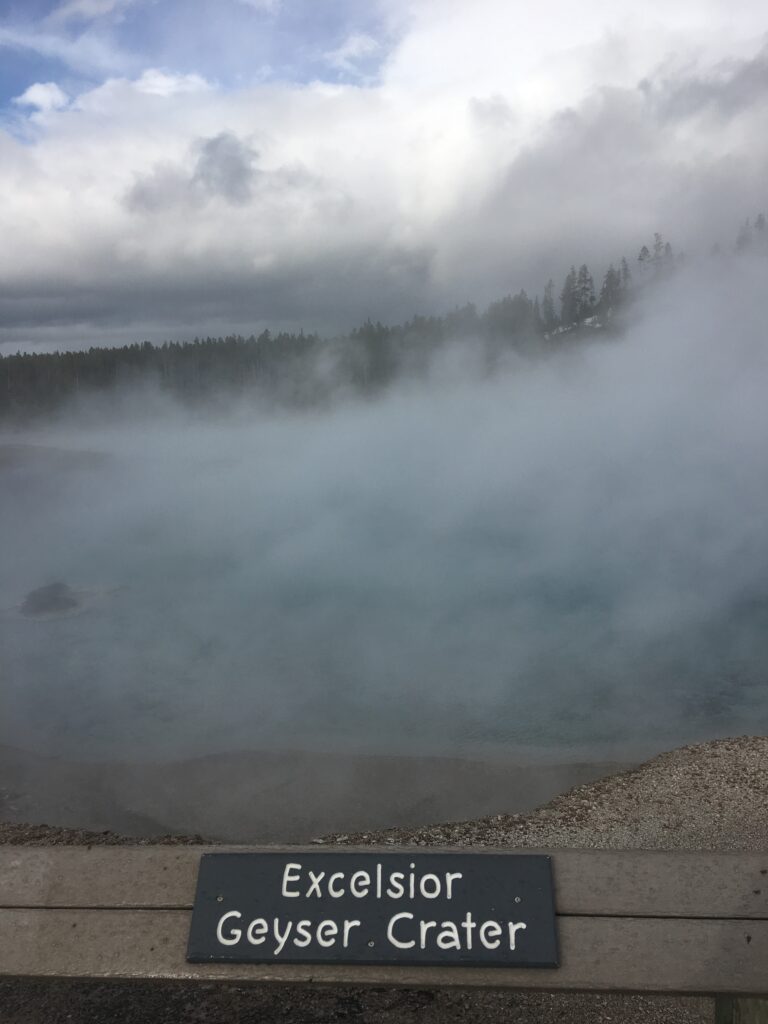
Grand Prismatic Spring (Midway Geyser Basin) :
A trip to YNP wouldn’t be complete without a stop at Midway Geyser Basin to view Grand Prismatic Spring. This rainbow-colored hot spring is one of the largest in the world and is striking! Of all the stunning sights that Yellowstone has to offer, the most majestic and awe-inspiring is the Grand Prismatic Spring.
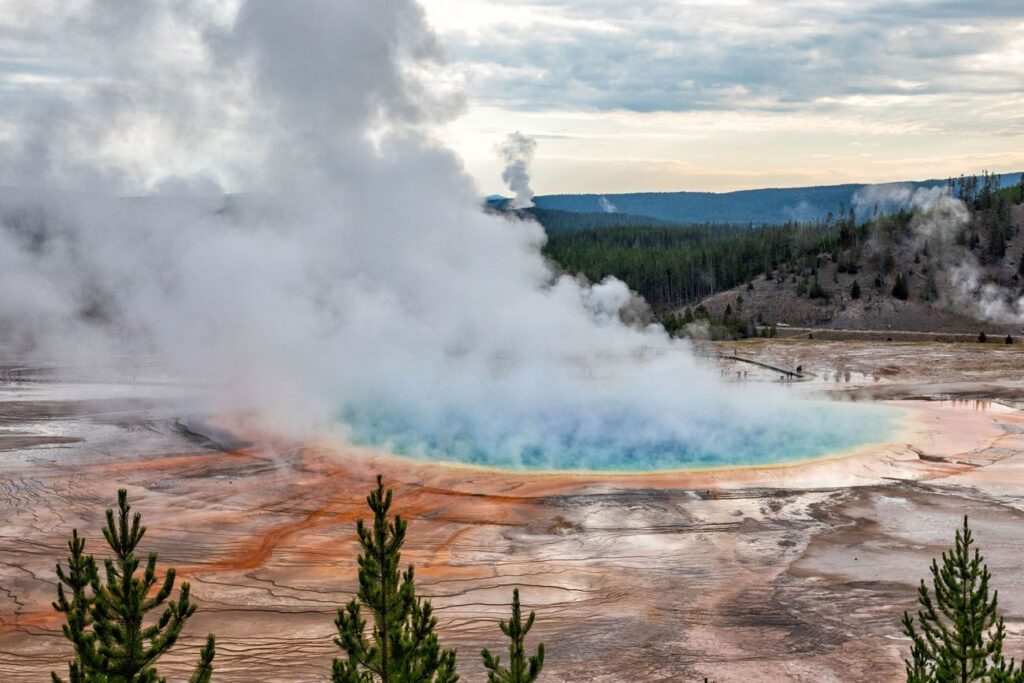
What’s the cause of the mind-blowing colors of the Grand Prismatic Spring? Hydrothermal features are also habitats in which microscopic organisms survive and thrive. They are called thermophiles: “thermo” for heat and “phile” for lover. Although they are too small to be seen with the naked eye, trillions are grouped together and appear as masses of color. They are nourished by energy and chemical building blocks. Colorless and yellow thermophiles grow in the hottest water. Orange, brown, and green thermophiles grow in cooler waters.
Imagine living in near-boiling temperatures, in hydrothermal features with the alkalinity of baking soda, or in water so acidic that it can burn holes in clothing. Microorganisms in Yellowstone need these extremes to survive.
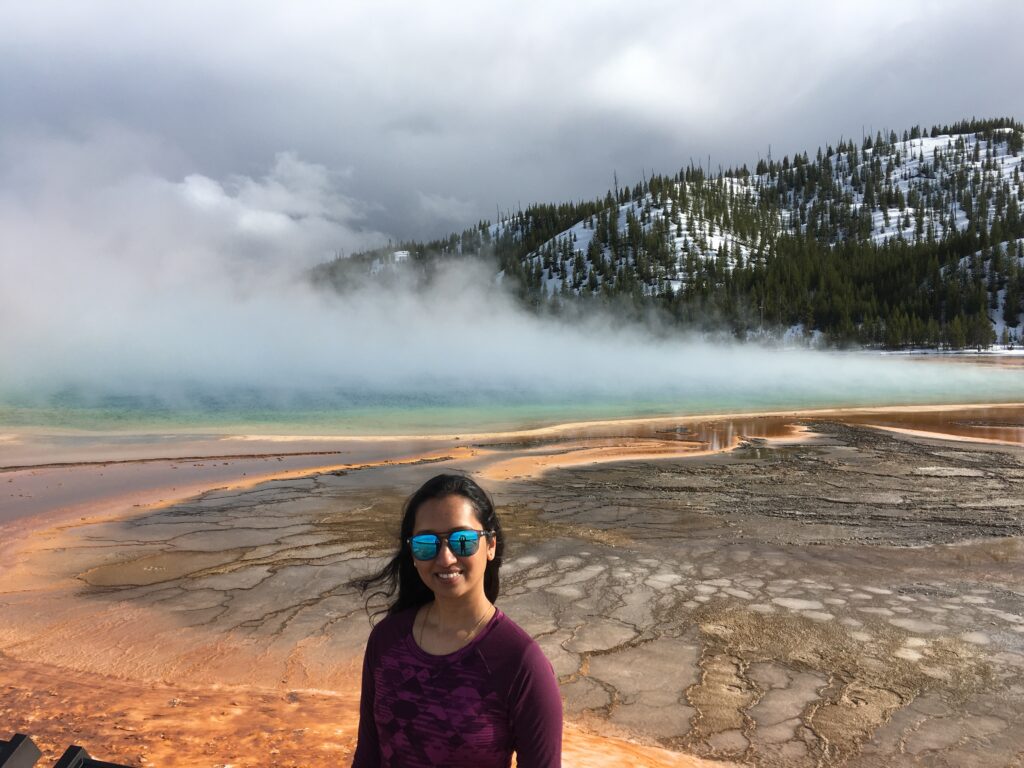
Old Faithful ( Upper Geyser Basin):
No other places in Yellowstone are as iconic or as popular as Old Faithful. I guarantee you that you will jump with excitement when this geyser starts spewing water 150 feet into the air. People travel from all over the world to watch this famous geyser erupt. Old Faithful geyser was named for its frequent and predictable eruptions (every 70 minutes or you may check at the visitor center for eruption time).
These thermal features are the product of millions of years of geology at work. Geysers are hot springs that erupt periodically. The eruptions are the result of super-heated water below-ground becoming trapped in channels leading to the surface. The hottest temperatures are at the bottom of these channels, but the deep water cannot vaporize because of the weight of the water above. Instead, steam is sent upwards in bubbles, leading to a point where the confined bubbles lift the water above, causing the geyser to overflow. And believe me, it’s an absolute delight to watch this nature’s wonder.
Hot Springs are like geysers, but their underground channels are large enough to allow rapid circulation of water. The microorganisms which live in and around the hot springs often make the pools very colorful.
Do not leave this area without visiting The Old Faithful Inn, which is one of the few remaining log hotels in the United States.
After witnessing such a marvelous natural wonders, our day with an extremely tasty Mexican cuisine at a food truck ( Las Palmitas Mexican Food Truck).
Day 3
We started another exciting day with gauging on heavy breakfast at “Running Bear Pancake House”.
Mammoth Spring:
Yellowstone National Park preserves the most extraordinary collection of hot springs, geysers, and mudpots. When you feel you have seen it all, just wait for Mammoth Hot Spring. It looks like you are on another planet from some sci-fi movie.
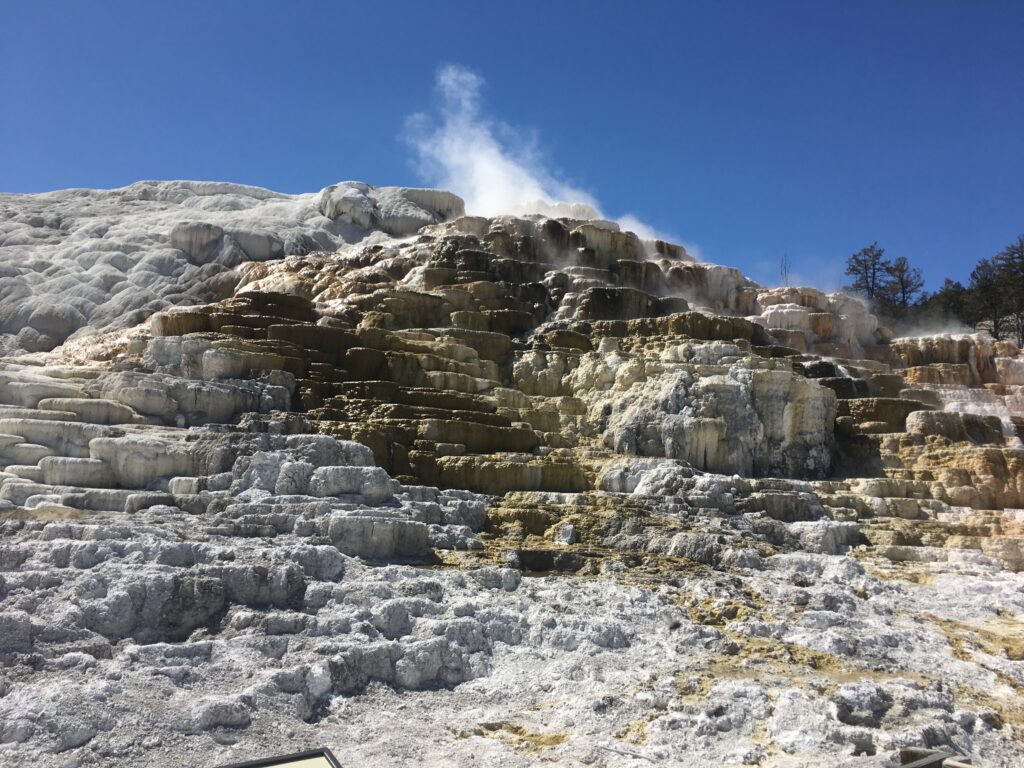
The water that pours over the hot springs has been in the ground for over 1,000 years and is responsible for all the formations in the area as it cascades down. Travertine terraces are formed from limestone. Thermal water rises through the limestone, carrying high amounts of the dissolved limestone (calcium carbonate). At the surface, this calcium carbonate is deposited, forming travertine terraces. The formations resemble a cave turned inside out.
Travertine formations grow much more rapidly than the more common sinter formations in the park because of the “soft” nature of limestone. Due to the rapid deposition, features here are always changing! It is worth taking the time to wander around the boardwalks of the Lower Terraces and Upper Terraces.
Lamar Valley in Northern Yellowstone:
The Lamar Valley has been called the Yellowstone’s “Serengeti” due to the open meadows and large herds of bison, pronghorns and other wildlife. Where there is a prey, there are predators. Buffalo, elk, grizzly bears, wolves, black bears, antelope, otters, osprey, bald eagles, and coyotes are just a few of the species you might find along the highway as you drive through the heart of this legendary valley of YNP. You’ll see plenty of pronghorn antelope throughout the first two sections of the Lamar Road.
Lamar Valley is also renowned for its gray wolf population. These crafty creatures are harder to spot than the big bison, but you’ll have a better chance of spotting one around sunrise and sunset.
We were lucky enough to spot Bears, Red dogs (bison cubs), herds of bison and antelopes. But, no luck of sighting wolves (phew!).
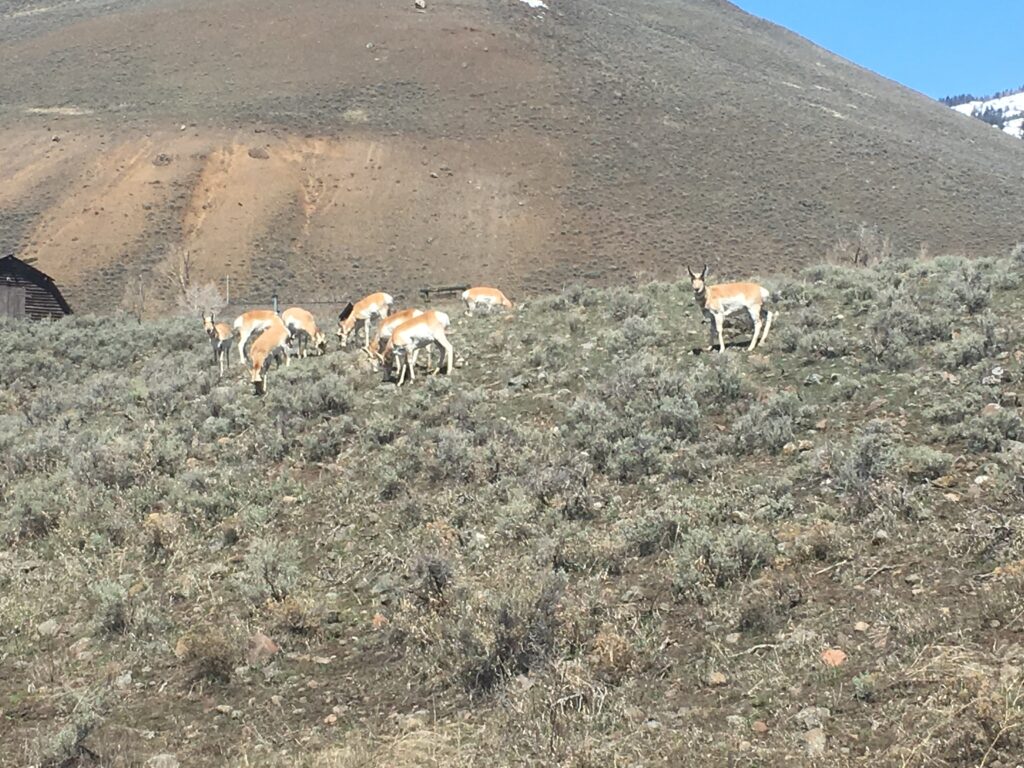
Boiling River:
Boiling River in Yellowstone is one of the less known places of America’s oldest National Park. Tucked in the far North corner of the park it’s a true hidden gem of YNP. Boiling River in Yellowstone is a sort of a natural hot tub where a large hot spring enters the cold waters of Gardner mountain river. The cold and hot water mingle and makes the water temperature comfortable enough to bathe in. The water temperatures can vary from around 100-140° Fahrenheit (38-54°C), so you must look for a perfect temperature for you.
Boiling River is one of the few legal thermal soaking areas in Yellowstone. It is located approximately 2 miles north of Mammoth and 2.9 miles south of the park’s North Entrance. Go during the day. The Boiling River is closed once dark hits (6 pm). Don’t forget your swimsuit and water shoes. There is a bathroom and a small parking area at the start of the short trail leading to the hot spring.
Canary Spring:
After soaking into the natural sauna, we went to see Canary Spring. This short spur trail drops from the Upper Terrace Drive to view spectacular Canary Spring.
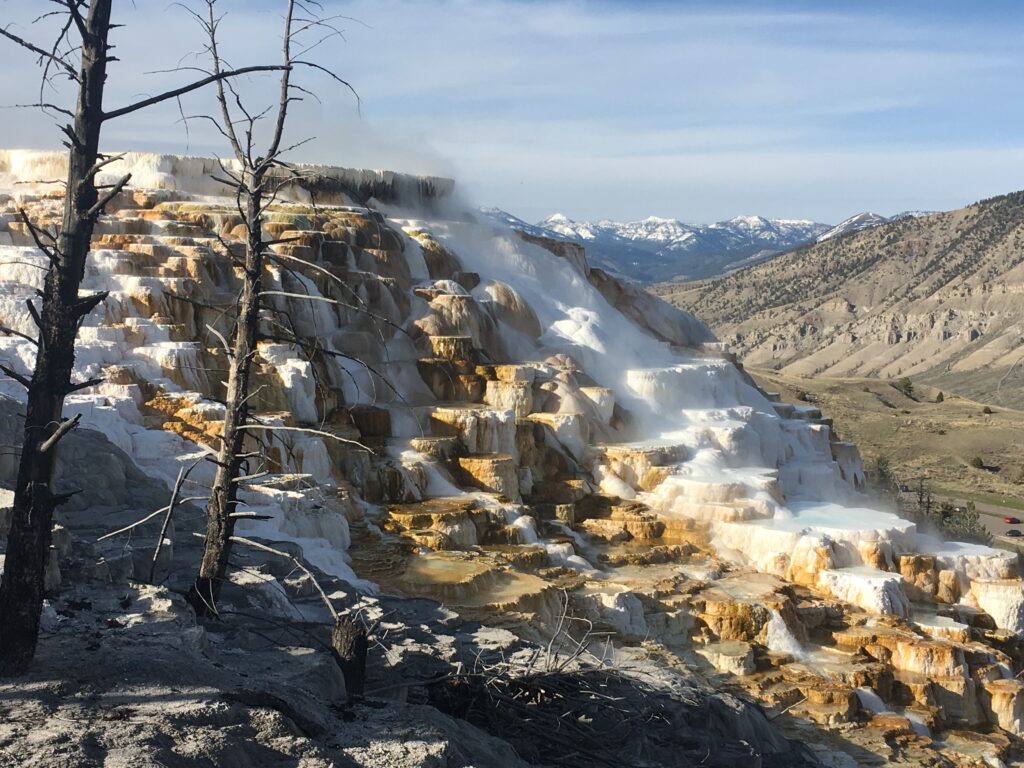
Day 4
Biscuit Basin (Upper Geyser Basin):
Biscuit Basin is a wonderland of pools. A 1/4-mile boardwalk will guide you through Biscuit Basin which got its name from the biscuit-like deposits that once surrounded the bright blue water of Sapphire Pool. In 1959, Sapphire Pool began erupting violently due to the earthquake. Its violent eruptions destroyed most of these biscuit-like features that it was known for. Although the “biscuits” are not as prominent as they were in the past, this amazingly blue pool is still worth a visit, as are the other thermal features in Biscuit Basin.
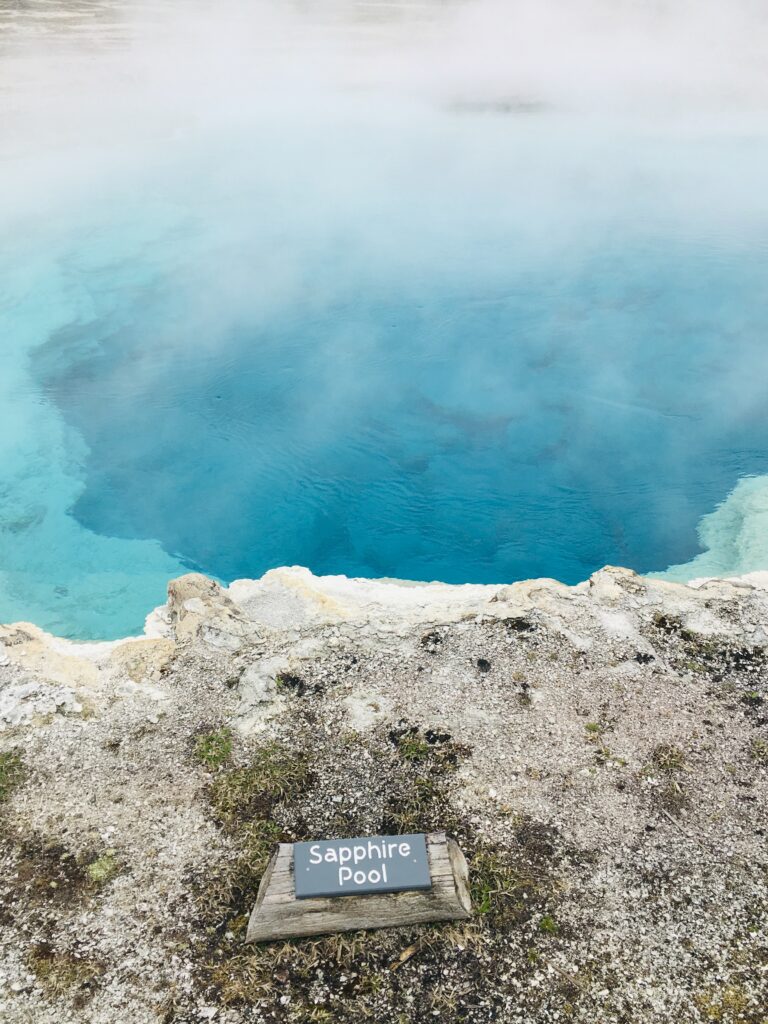
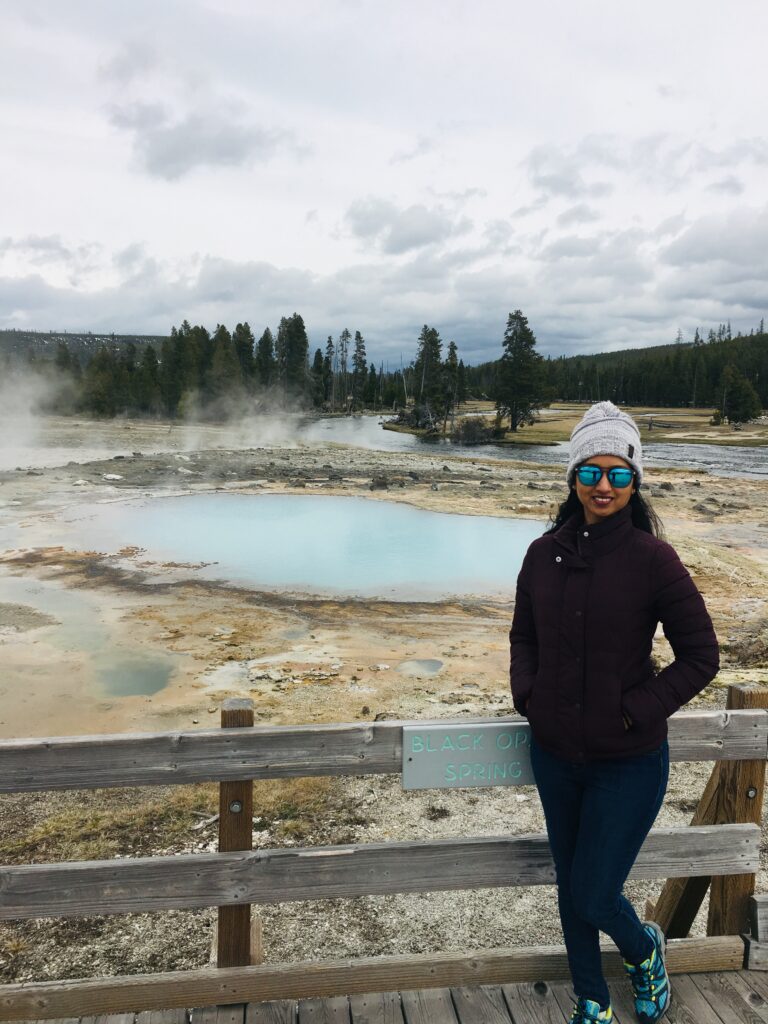
After relishing this uniquely beautiful world of YNP, we started our journey back to Jackson.
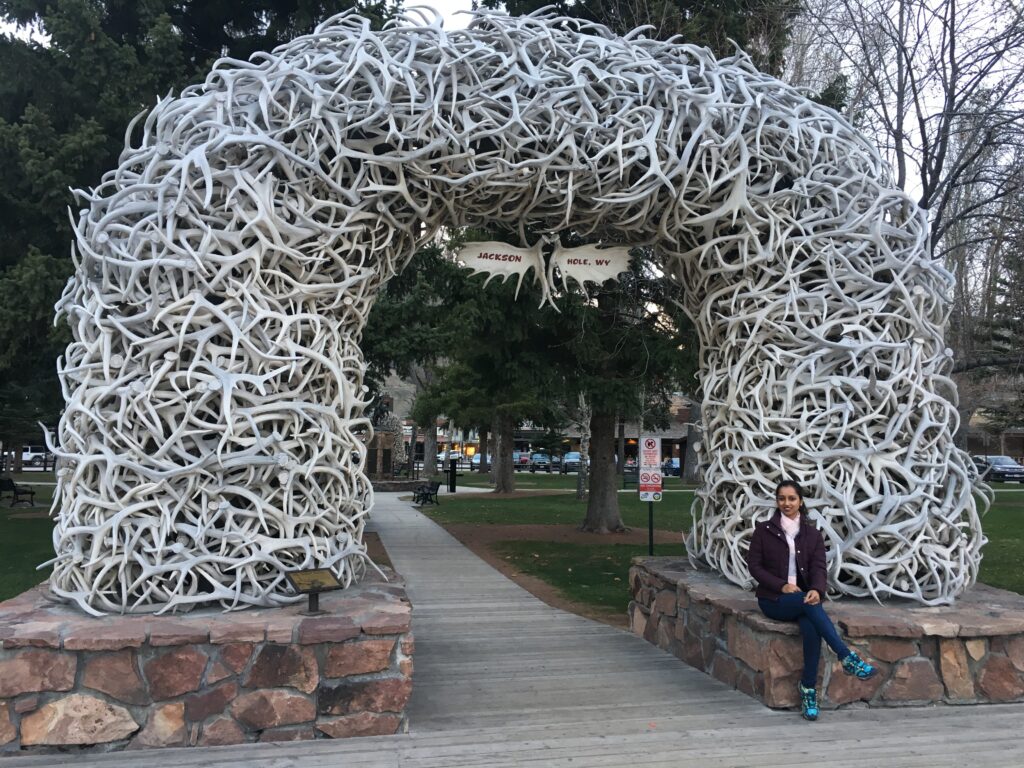
Day 5
Fly back home.
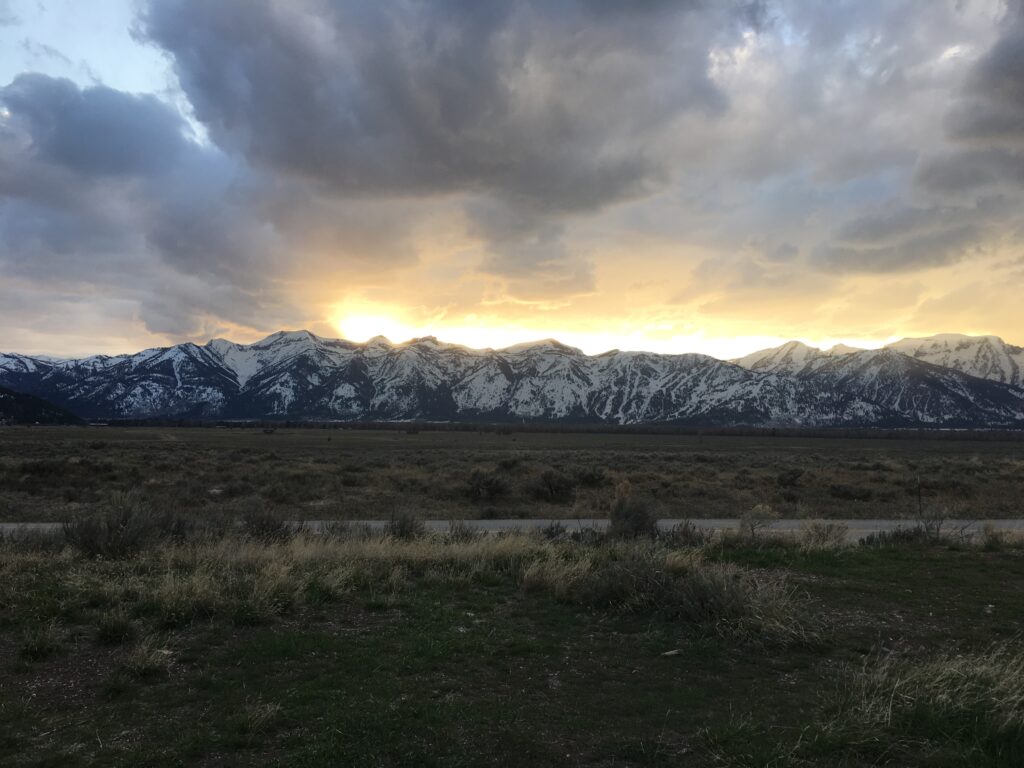
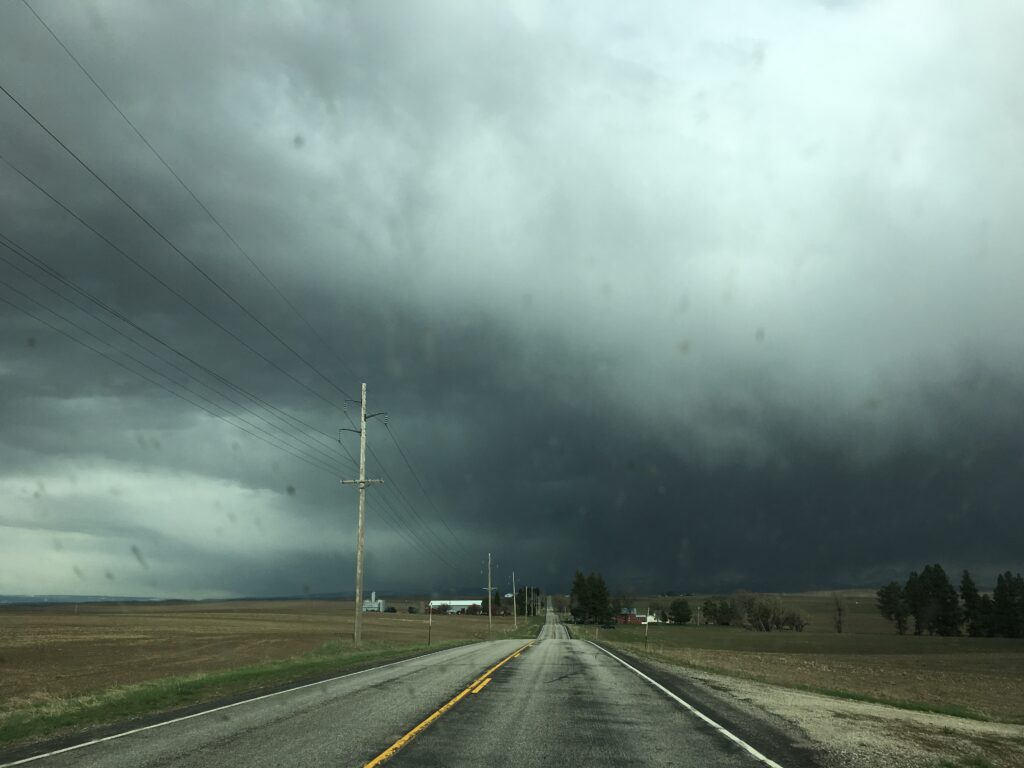
Wildlife at Yellowstone :
Yes, the geothermal features and waterfalls are impressive, but the abundance and assortment of wildlife attract just as many visitors. For many first-time YNP visitors, the chance to see a wild wolf, black bear or grizzly is at the top of the wish list. In addition to its numerous geological features, YNP also has plentiful wildlife. It is home to the oldest and largest bison herd in the United States, along with wolves, elk, and grizzly bears.
Bison:
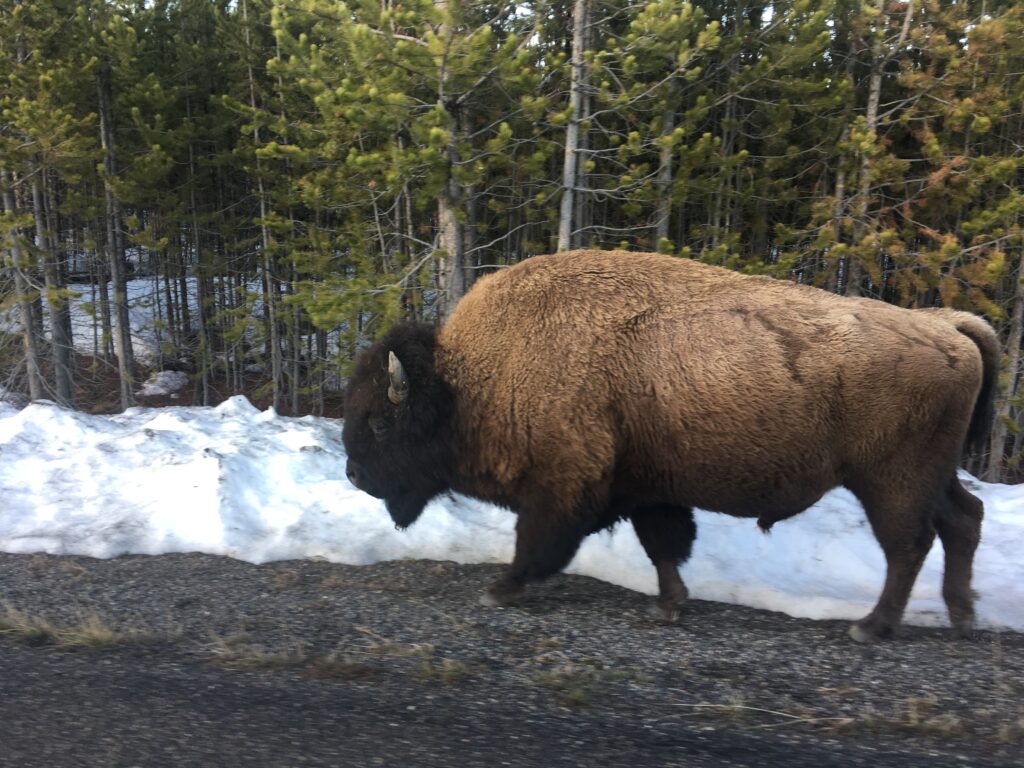
Bison is the largest land-dwelling mammal in North America. Yellowstone preserves the most important bison herd in the United States.
Yellowstone bison are exceptional because they comprise the nation’s largest bison population on public land and are among the few bison herds that have not been hybridized through interbreeding with cattle. Unlike most other herds, this population has thousands of individuals that are allowed to roam relatively freely over the expansive landscape of YNP and some nearby areas of Montana. They also exhibit wild behavior like their ancient ancestors, congregating during the breeding season to compete for mates, as well as migration and exploration that result in the use of new habitat areas. In August 2018, an estimated population of bison is 4,527.
Grizzly Bears :
Yellowstone is home to two species of bears: grizzly bears and black bears. Of the two species, grizzly bears have a much smaller range across the United States. The grizzly bear is typically larger than the black bear and has a large muscle mass above its shoulders; a concave, rather than straight or convex, facial profile; and much more aggressive behavior.
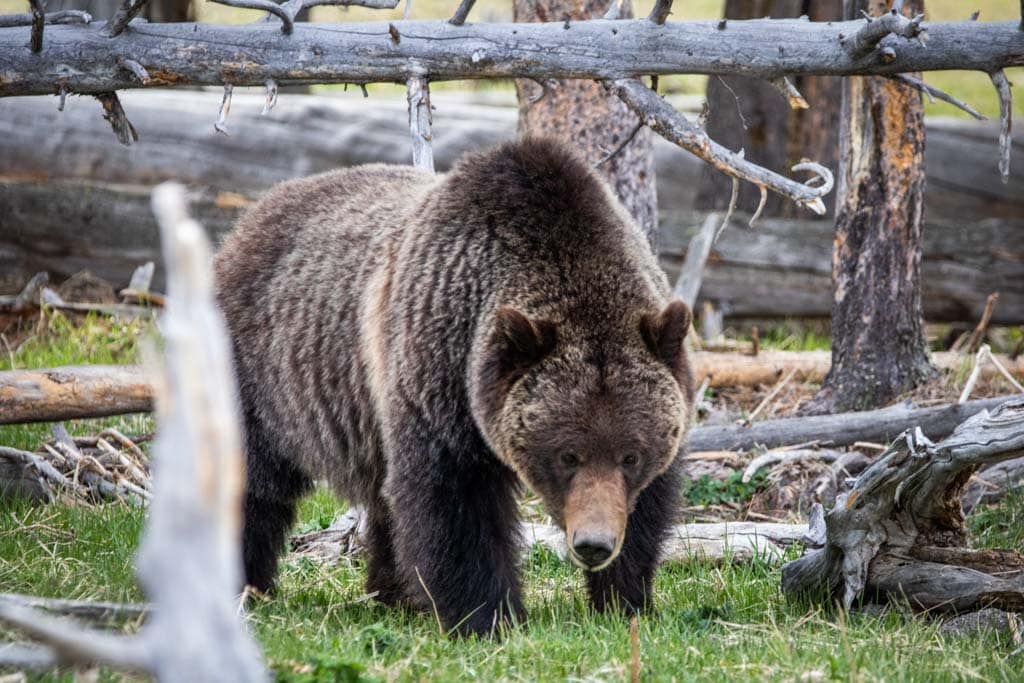
Wolves, Coyotes and Foxes in Yellowstone:
Wolves, coyotes and foxes, all members of the dog (Canidae) family, can be viewed in Yellowstone National Park. Coyotes are the most abundant and can be seen throughout the park and throughout the day. The three types of canids can be identified by their size and appearance. Wolves are the largest, then coyotes, and foxes are the smallest. Coyotes and foxes are usually seen alone, while wolves can be alone or travel in a pack.
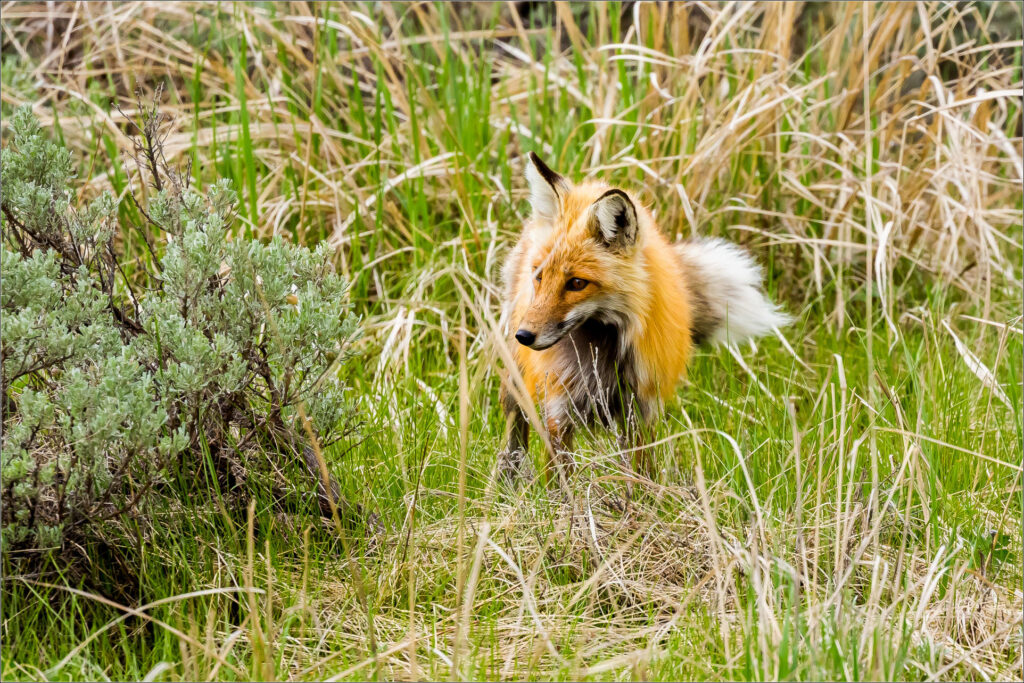
From 1995 to 1997, wild wolves from Canada and Montana were released in YNP. The park helps ensure the species’ long-term viability in Greater Yellowstone and has provided a place for research on how wolves may affect many aspects of the ecosystem. The northern range of Yellowstone is one of the best places in the world to watch wolves. We never saw any wolves, but we hear the best time to spot them is at dawn.
The coyote is a common predator in Greater Yellowstone, often seen traveling through open meadows and valleys. Coyotes, also known as “song dogs,” communicate with each other by a variety of long-range vocalizations. You may hear groups or lone animals howling, especially during dawn and dusk periods.
Apart from these magnificent animals, Yellowstone also has Elk, Moose, Bighorn Sheep, Mule Deer, Pronghorn, White-tailed deer, River Otter.
Wildlife Spotting Tips :
- Head to Lamar valley or Hyden Valley
- Pack binoculars or a spotting scope. Many animals are tough to see with the naked eye.
- In the Lamar Valley, look for groups of people pulled over—chances are good someone has spotted a wolf, bison, or another animal. You will see these folks in the Lamar Valley with large spotting scopes and intense gazes. They are usually quite friendly and will offer advice.
- Be still. Park yourself at a good vantage point and wait quietly for wildlife to wander by. The park rewards the patient and observant naturalist. Every time.
- Park regulations require that people stay at least 100 yards (91 m) from bears (unless safely in your car as a bear moves by).
- Animals are most active at dawn and dusk. If you’re going early, aim to be in the valleys before sunrise for the best odds.
- Plan your trip during the offseason. Grizzly bears emerge from hibernation in the spring and are actively seeking out food. In the winter, many enthusiasts enjoy watching wolves in the Lamar Valley (the northern road is the only one maintained in snowy conditions).
Yellowstone is a large national park – and an extremely popular one. Here are some things you should know before you go:
- Stay a safe distance from thermal features and never leave the boardwalk to walk on a geyser’s fragile crust.
- Respect that these are WILD animals; they aren’t pets and you aren’t in a zoo.
- Maintain a safe distance from any wildlife you may come across (at least 25 yards is usually recommended), and DO NOT try to approach or feed them. Don’t get too close!
- Overestimate driving times. The speed limits posted in Yellowstone vary from 25 to 45 miles per hour due to winding roads and the possibility of wildlife running out in front of you.
- Each visitor center is different. Be sure to allow enough time to visit at least a couple of these in order to really get a feel for Yellowstone and its features.
- Go in the off-season. I would definitely recommend visiting Yellowstone in either the spring or autumn (or even winter!). The park gets really crowded during the summer months and so does the traffic.
Like glaciers are melting away; it is possible that Old Faithful may stop erupting someday. Change is constant and it is relevant to mother nature as well. Enjoy nature and respect its beauty.
